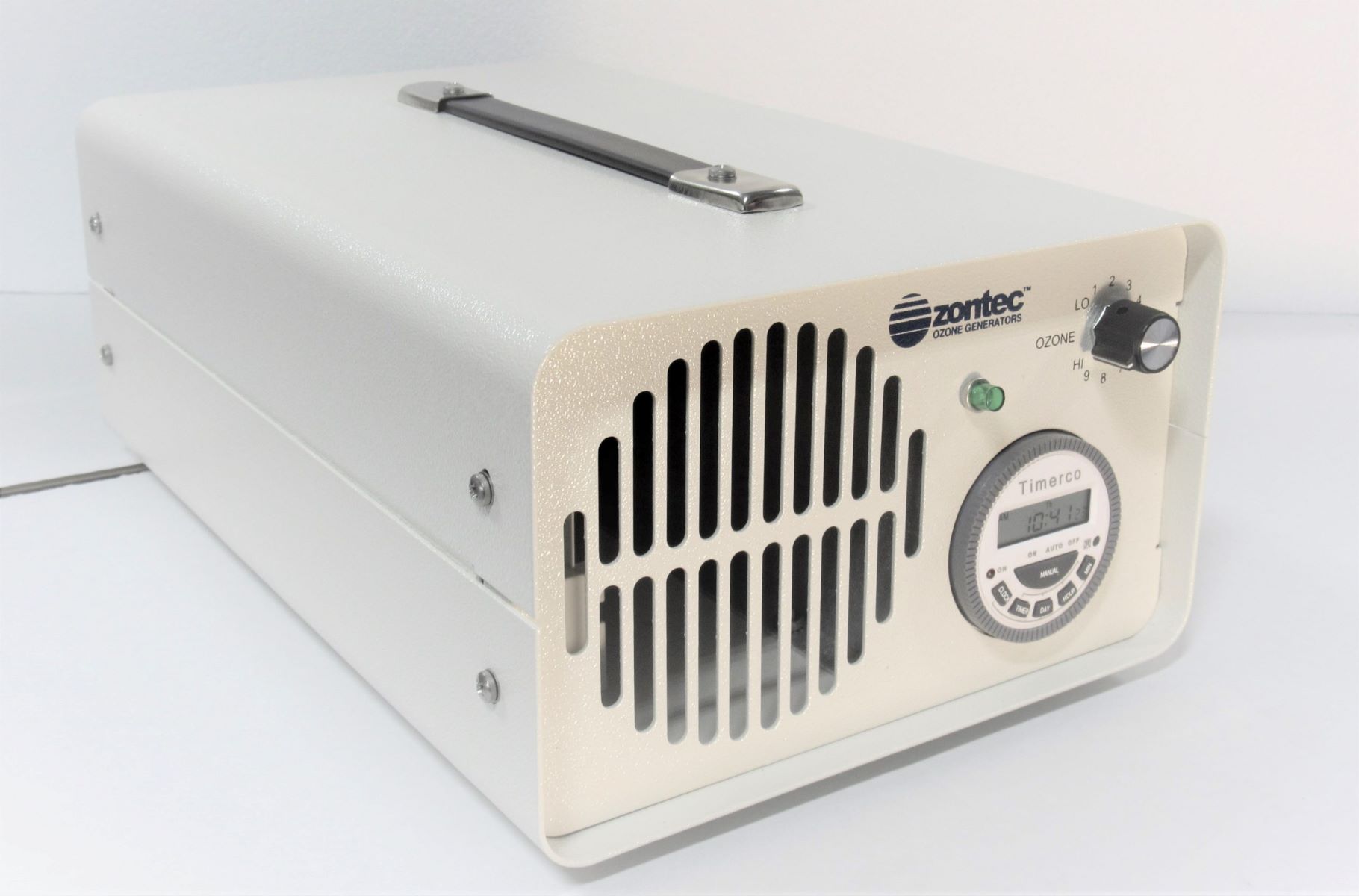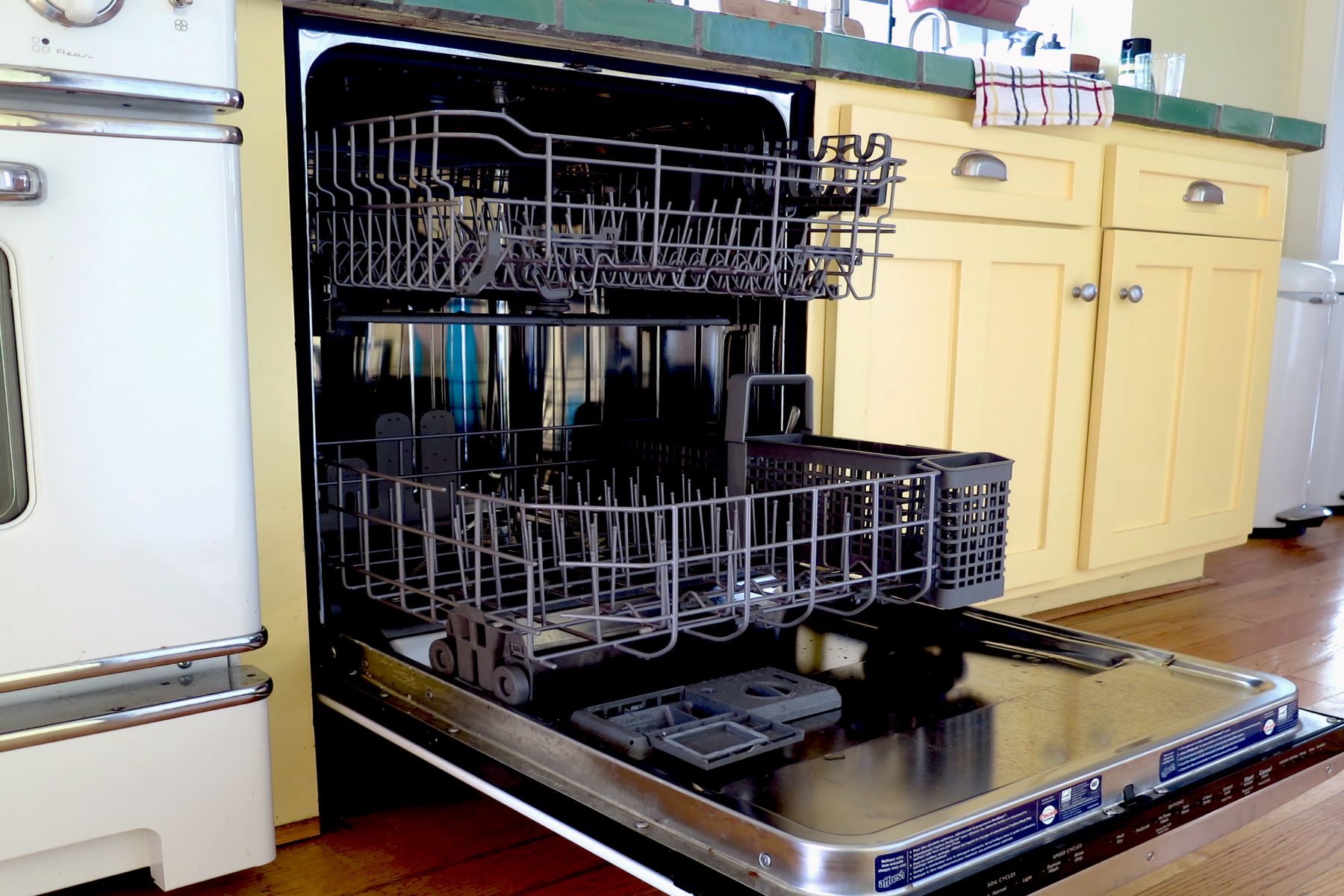Home>Automotive>Say Goodbye To Gasoline Smell With An Ozone Generator!


Automotive
Say Goodbye To Gasoline Smell With An Ozone Generator!
Published: February 10, 2024
Eliminate gasoline smell in your car with an ozone generator. Say goodbye to unpleasant odors and enjoy a fresh, clean automotive environment. Discover the solution today!
(Many of the links in this article redirect to a specific reviewed product. Your purchase of these products through affiliate links helps to generate commission for Regretless.com, at no extra cost. Learn more)
Table of Contents
Introduction
When you step into your car, the last thing you want to be greeted by is the lingering smell of gasoline. Whether it's due to a spill, a leak, or simply the result of refueling, the pungent odor can quickly become overwhelming, making your driving experience less than pleasant. However, there is a solution that can effectively eliminate this stubborn smell and restore the fresh, clean scent to your vehicle: an ozone generator.
In this comprehensive guide, we will delve into the world of ozone generators and how they can effectively banish gasoline odors from your car. You'll discover the science behind these powerful devices, their numerous benefits, and the essential safety precautions for their use. By the end of this journey, you'll be equipped with the knowledge to confidently choose and utilize an ozone generator to bid farewell to the persistent gasoline smell in your vehicle.
So, buckle up and get ready to explore the transformative potential of ozone generators in refreshing your car's interior ambiance. It's time to say goodbye to the gasoline smell and welcome a breath of fresh air into your driving experience.
Understanding the Gasoline Smell
The distinctive scent of gasoline is instantly recognizable, often evoking memories of fueling up at the gas station or working on a car engine. This potent odor is primarily attributed to the volatile organic compounds (VOCs) present in gasoline. These compounds, including benzene, toluene, ethylbenzene, and xylene, emit a strong and pervasive smell that can permeate various materials and linger for extended periods.
When gasoline is spilled or leaks in a confined space, such as the interior of a car, the odor can quickly become overwhelming. The porous surfaces within the vehicle, including upholstery, carpets, and headliners, readily absorb the volatile compounds, exacerbating the persistence of the gasoline smell. Furthermore, the heat and humidity inside the car can intensify the release of these compounds, amplifying the olfactory impact.
The gasoline smell is not only unpleasant but can also pose health risks. Prolonged exposure to VOCs from gasoline can lead to headaches, dizziness, and nausea. Inhaling these fumes over an extended period may even cause more severe health issues. Additionally, the presence of gasoline odors in a vehicle can diminish the overall comfort and enjoyment of driving, creating a need for effective odor elimination solutions.
Understanding the nature of the gasoline smell is crucial in addressing its persistence and impact on the driving experience. With this knowledge as a foundation, we can explore the potential of ozone generators in effectively neutralizing and eliminating the gasoline odor, restoring a fresh and inviting ambiance to the vehicle's interior.
What is an Ozone Generator?
An ozone generator is a powerful device designed to produce ozone, a naturally occurring gas composed of three oxygen atoms (O3). Ozone is renowned for its exceptional oxidizing properties, making it a potent agent for neutralizing odors, disinfecting air and surfaces, and eliminating various contaminants. Ozone generators are widely utilized in commercial, industrial, and residential settings, including automotive applications, to address persistent odors such as those caused by gasoline spills or leaks.
These devices operate by converting oxygen (O2) molecules from the surrounding air into ozone through a process known as corona discharge or ultraviolet radiation. The resulting ozone is then dispersed into the targeted area, where it reacts with odor-causing molecules and microorganisms, effectively neutralizing them. This process, called oxidation, breaks down the molecular structure of the odor compounds, rendering them odorless and inert.
Ozone generators are available in various sizes and configurations, ranging from compact units suitable for automotive use to larger models designed for commercial and industrial applications. They are equipped with controls to regulate ozone output, allowing users to adjust the intensity of ozone production based on the specific odor elimination requirements.
It is important to note that while ozone generators are highly effective in neutralizing odors, they should be used with caution and in accordance with safety guidelines. Ozone is a powerful oxidant and can be harmful when inhaled in high concentrations. Therefore, it is essential to follow recommended protocols for safe operation, including ensuring adequate ventilation during and after ozone treatment.
In the context of eliminating gasoline odors from vehicles, ozone generators offer a compelling solution by effectively targeting and neutralizing the volatile compounds responsible for the persistent smell. Their ability to penetrate porous materials and reach confined spaces makes them particularly well-suited for addressing challenging odor issues within car interiors.
As we delve deeper into the capabilities and considerations associated with ozone generators, we will uncover their potential in transforming the olfactory environment of vehicles, providing a fresh and inviting atmosphere for drivers and passengers alike.
How Does an Ozone Generator Work?
An ozone generator operates on the principle of converting oxygen (O2) molecules from the surrounding air into ozone (O3), a powerful oxidizing agent with remarkable odor-neutralizing properties. There are two primary methods through which ozone is generated: corona discharge and ultraviolet radiation.
In the corona discharge method, the ozone generator contains a corona discharge element, typically made of metal or ceramic, that is supplied with a high voltage electrical current. This electrical energy causes the oxygen molecules in the air to undergo a transformation, splitting the O2 molecules into individual oxygen atoms. These free oxygen atoms can then combine with other oxygen molecules to form ozone. The resulting ozone is then released into the targeted area, where it interacts with odor molecules, effectively oxidizing and neutralizing them.
On the other hand, the ultraviolet radiation method utilizes a UV light source within the ozone generator to initiate the conversion of oxygen into ozone. When oxygen molecules pass through the UV light chamber, the high-energy ultraviolet radiation causes the O2 molecules to split, forming individual oxygen atoms. These free oxygen atoms can then combine with other oxygen molecules to create ozone, which is subsequently dispersed into the treatment area to eliminate odors and contaminants.
Once ozone is released into the environment, it reacts with odor-causing molecules and microorganisms through a process called oxidation. During oxidation, the ozone molecules directly interact with the volatile organic compounds (VOCs) present in gasoline odors, breaking down their molecular structure and rendering them odorless. This chemical reaction effectively neutralizes the persistent gasoline smell, transforming the olfactory environment within the car's interior.
The ability of ozone to penetrate porous materials and reach confined spaces makes it an ideal solution for addressing challenging odor issues. Ozone molecules can permeate upholstery, carpets, and other porous surfaces within the vehicle, ensuring comprehensive odor elimination throughout the interior. Moreover, the oxidizing action of ozone not only neutralizes odors but also helps in disinfecting and purifying the air and surfaces, contributing to a cleaner and healthier driving environment.
As we continue to explore the transformative potential of ozone generators in eliminating gasoline odors from vehicles, it becomes evident that their efficient operation and exceptional odor-neutralizing capabilities hold promise for creating a fresh and inviting ambiance within the car's interior.
Benefits of Using an Ozone Generator
Using an ozone generator to eliminate gasoline odors in vehicles offers a multitude of compelling benefits, making it a highly effective and versatile solution for addressing persistent and challenging odor issues. The following are the key advantages of utilizing an ozone generator for odor elimination in automotive applications:
-
Comprehensive Odor Neutralization: Ozone generators excel in thoroughly neutralizing gasoline odors by penetrating porous materials and reaching confined spaces within the vehicle's interior. Unlike surface-level air fresheners or masking agents, ozone effectively oxidizes and breaks down the molecular structure of odor-causing compounds, ensuring a comprehensive and long-lasting elimination of the gasoline smell.
-
Versatility and Efficiency: Ozone generators are versatile in their application, capable of addressing a wide range of odors and contaminants beyond gasoline smells. Whether it's smoke, pet odors, mold, or other persistent odors, ozone generators offer an efficient and reliable solution for restoring a fresh and inviting ambiance to the car's interior.
-
Non-Toxic and Chemical-Free: Unlike traditional chemical-based odor eliminators, ozone generators operate using natural oxygen molecules present in the air, producing ozone through a physical process. This non-toxic and chemical-free approach makes ozone treatment a safer and more environmentally friendly option for odor elimination, minimizing the use of harsh chemicals and artificial fragrances.
-
Disinfection and Air Purification: In addition to neutralizing odors, ozone generators contribute to air purification and surface disinfection within the vehicle. Ozone's powerful oxidizing properties effectively eliminate bacteria, viruses, and other microorganisms, enhancing the overall cleanliness and hygiene of the car's interior environment.
-
Long-Lasting Results: Ozone treatment delivers enduring results, ensuring that the gasoline odor does not return shortly after the treatment. By targeting the root cause of the odor and neutralizing it at a molecular level, ozone generators provide a sustained and lasting solution, allowing drivers and passengers to enjoy a fresh and odor-free driving experience for an extended period.
-
Time and Cost Efficiency: Ozone treatment offers a time-efficient and cost-effective solution for odor elimination in comparison to traditional methods that may require frequent reapplication or extensive cleaning. With ozone generators, the odor elimination process is streamlined, minimizing the need for repetitive treatments and costly maintenance, thereby saving time and resources.
By harnessing the remarkable benefits of ozone generators, drivers can effectively bid farewell to the persistent gasoline smell, revitalizing their car's interior ambiance and creating a more enjoyable and inviting driving environment. The transformative potential of ozone generators in addressing challenging odors underscores their value as a powerful and efficient solution for odor elimination in automotive settings.
Read more: How To Say Goodbye In Korean
Choosing the Right Ozone Generator
When selecting an ozone generator for eliminating gasoline odors from vehicles, several key factors should be considered to ensure optimal performance and safety. The following guidelines can help in choosing the right ozone generator for automotive applications:
-
Ozone Output Capacity: Assess the ozone output capacity of the generator based on the size of the vehicle interior and the severity of the gasoline odor. Smaller vehicles may require lower ozone output, while larger or heavily affected interiors may benefit from higher ozone production. It is essential to select a generator with adjustable output levels to accommodate varying odor elimination requirements.
-
Portability and Size: Consider the portability and size of the ozone generator, especially for automotive use. Compact and lightweight models are preferable, as they offer ease of handling and maneuverability within the confined space of a vehicle's interior. Portable units with a convenient carrying handle or compact design facilitate efficient treatment of different areas within the car.
-
Adjustable Settings and Timer: Look for ozone generators equipped with adjustable settings and a timer function. The ability to control ozone output intensity and duration enables precise treatment tailored to the specific odor elimination needs. Timed operation allows for automated shut-off after the treatment cycle, enhancing convenience and safety.
-
Safety Features: Prioritize safety features such as built-in ozone concentration monitoring, automatic shut-off mechanisms, and ozone-resistant materials in the construction of the generator. These features ensure safe and controlled ozone treatment, minimizing the risk of overexposure to high ozone levels and safeguarding the well-being of users and occupants.
-
Ozone Delivery Mechanism: Evaluate the delivery mechanism of the ozone generator, including the dispersion method for releasing ozone into the vehicle's interior. Look for models with efficient and uniform ozone distribution to ensure comprehensive coverage, reaching all areas where gasoline odors may be present.
-
User-Friendly Operation: Opt for ozone generators with user-friendly controls and clear operational instructions. Intuitive interfaces, indicator lights, and straightforward settings enhance the ease of use, allowing for hassle-free operation and effective odor elimination without complex procedures.
-
Reliability and Durability: Consider the overall reliability and durability of the ozone generator. Select models from reputable manufacturers known for producing high-quality and reliable ozone generators. Robust construction and dependable performance contribute to long-term effectiveness and consistent odor elimination results.
By carefully considering these factors and selecting an ozone generator that aligns with the specific requirements of automotive odor elimination, drivers can effectively address gasoline odors and restore a clean and fresh ambiance to their vehicles' interiors. The right ozone generator serves as a valuable tool in combating persistent odors, enhancing driving comfort, and creating a more inviting environment for occupants.
Using an Ozone Generator to Eliminate Gasoline Smell
Utilizing an ozone generator to eliminate the pervasive gasoline smell from vehicle interiors offers a transformative solution that targets the root cause of the odor, ensuring comprehensive and long-lasting results. The process of ozone treatment involves strategically deploying ozone molecules to neutralize the volatile organic compounds (VOCs) responsible for the persistent gasoline odor, effectively restoring a fresh and inviting ambiance to the car's interior.
Ozone generators operate by converting oxygen molecules from the surrounding air into ozone through corona discharge or ultraviolet radiation methods. Once ozone is generated, it is dispersed into the vehicle's interior, permeating porous materials and reaching confined spaces where gasoline odors may linger. The exceptional oxidizing properties of ozone enable it to react with the odor-causing molecules, breaking down their molecular structure and rendering them odorless.
The application of ozone treatment is particularly effective in addressing gasoline odors, as it penetrates upholstery, carpets, and other porous surfaces within the vehicle, ensuring comprehensive odor elimination. Unlike traditional air fresheners or masking agents that merely cover up odors, ozone treatment directly targets and neutralizes the root cause of the gasoline smell, providing enduring results that extend beyond surface-level treatment.
The use of an ozone generator to eliminate gasoline odors offers a non-toxic and chemical-free approach to odor elimination, minimizing the reliance on harsh chemicals and artificial fragrances. This natural and environmentally friendly method aligns with the growing preference for sustainable and health-conscious solutions, contributing to a cleaner and healthier driving environment.
Moreover, ozone treatment not only neutralizes odors but also contributes to air purification and surface disinfection within the vehicle. By eliminating bacteria, viruses, and other microorganisms, ozone generators enhance the overall cleanliness and hygiene of the car's interior, promoting a more sanitized and comfortable environment for drivers and passengers.
The transformative potential of using an ozone generator to eliminate gasoline smell extends beyond immediate odor elimination, offering a holistic approach to creating a fresh and inviting ambiance within the vehicle. By harnessing the exceptional odor-neutralizing and purifying properties of ozone, drivers can bid farewell to the persistent gasoline smell and embrace a revitalized driving experience characterized by a clean, fresh, and inviting interior environment.
Safety Precautions When Using an Ozone Generator
When utilizing an ozone generator to eliminate gasoline odors from vehicle interiors, it is essential to prioritize safety precautions to ensure the well-being of individuals and the optimal performance of the generator. Ozone, while highly effective in neutralizing odors, is a powerful oxidant that requires careful handling and adherence to safety guidelines.
-
Occupant and Operator Safety: Before commencing ozone treatment, ensure that the vehicle is unoccupied, and no individuals, including pets, are present inside. Ozone treatment should be conducted in a well-ventilated area to minimize the risk of inhalation. Additionally, operators should wear appropriate personal protective equipment, including gloves and a mask, to prevent direct contact with ozone and minimize exposure.
-
Ventilation and Air Circulation: Adequate ventilation is crucial during and after ozone treatment. Open all doors and windows to facilitate the dispersion of ozone and the release of residual ozone gas following the treatment cycle. This helps in minimizing ozone accumulation and ensures the safe dissipation of ozone from the vehicle's interior.
-
Ozone Monitoring and Control: Employ ozone generators equipped with built-in ozone concentration monitoring and control features. These mechanisms enable the regulation of ozone output levels, ensuring that the concentration remains within safe limits. Additionally, automatic shut-off functions can prevent excessive ozone production, enhancing safety during operation.
-
Occupational Safety Guidelines: Adhere to occupational safety guidelines and recommendations for ozone exposure limits. Familiarize yourself with the permissible exposure limits (PEL) and recommended exposure limits (REL) for ozone as defined by regulatory authorities. This knowledge can guide the safe operation of ozone generators and minimize the risk of overexposure.
-
Post-Treatment Ventilation Period: After completing the ozone treatment cycle, allow for an extended post-treatment ventilation period to thoroughly air out the vehicle. This step is essential for ensuring that residual ozone is effectively removed, reducing the potential for prolonged exposure. Conduct a final inspection to confirm that the vehicle's interior is free of ozone odors before reoccupying.
-
Ozone-Free Periodic Maintenance: Implement a schedule for periodic maintenance and inspection of the ozone generator to ensure its continued safe and effective operation. Regular maintenance, including cleaning and calibration, helps in maintaining optimal performance and minimizing the risk of malfunction or excessive ozone production.
By diligently observing these safety precautions, individuals can harness the exceptional odor-neutralizing capabilities of ozone generators while prioritizing the safety of occupants and operators. A conscientious approach to safety not only ensures the effective elimination of gasoline odors but also contributes to creating a secure and comfortable environment for all individuals involved in the ozone treatment process.
Conclusion
In conclusion, the persistent gasoline smell that often permeates vehicle interiors can significantly detract from the overall driving experience, impacting both comfort and well-being. However, the transformative potential of ozone generators in effectively neutralizing and eliminating gasoline odors offers a compelling solution to this pervasive issue. By harnessing the exceptional oxidizing properties of ozone, drivers can bid farewell to the lingering gasoline smell and welcome a fresh and inviting ambiance into their vehicles.
Throughout this comprehensive guide, we have explored the science behind gasoline odors, delving into the volatile organic compounds (VOCs) responsible for the pungent smell and their impact on the driving environment. Understanding the nature of the gasoline odor is crucial in recognizing the need for an efficient and long-lasting solution, prompting the exploration of ozone generators as a powerful remedy.
The benefits of using an ozone generator for odor elimination in automotive applications are multifaceted, encompassing comprehensive odor neutralization, versatility, non-toxic operation, disinfection, long-lasting results, and time and cost efficiency. These advantages underscore the value of ozone treatment in addressing persistent odors, offering drivers a sustainable and effective means of revitalizing their vehicle interiors.
Moreover, the process of choosing the right ozone generator involves careful consideration of factors such as ozone output capacity, portability, safety features, and user-friendly operation. By selecting a suitable ozone generator tailored to the specific requirements of automotive odor elimination, drivers can optimize the effectiveness of ozone treatment and ensure a safe and controlled application.
However, it is essential to emphasize the paramount importance of safety precautions when using ozone generators. Prioritizing occupant and operator safety, ventilation, ozone monitoring and control, adherence to occupational safety guidelines, post-treatment ventilation, and periodic maintenance are critical in ensuring the safe and responsible use of ozone generators for odor elimination in vehicles.
In essence, the utilization of ozone generators to eliminate gasoline odors presents a holistic approach to creating a clean, fresh, and inviting driving environment. By embracing the exceptional odor-neutralizing and purifying properties of ozone, drivers can transform their vehicle interiors, bidding farewell to the persistent gasoline smell and embracing a revitalized driving experience characterized by enhanced comfort, cleanliness, and overall well-being.














